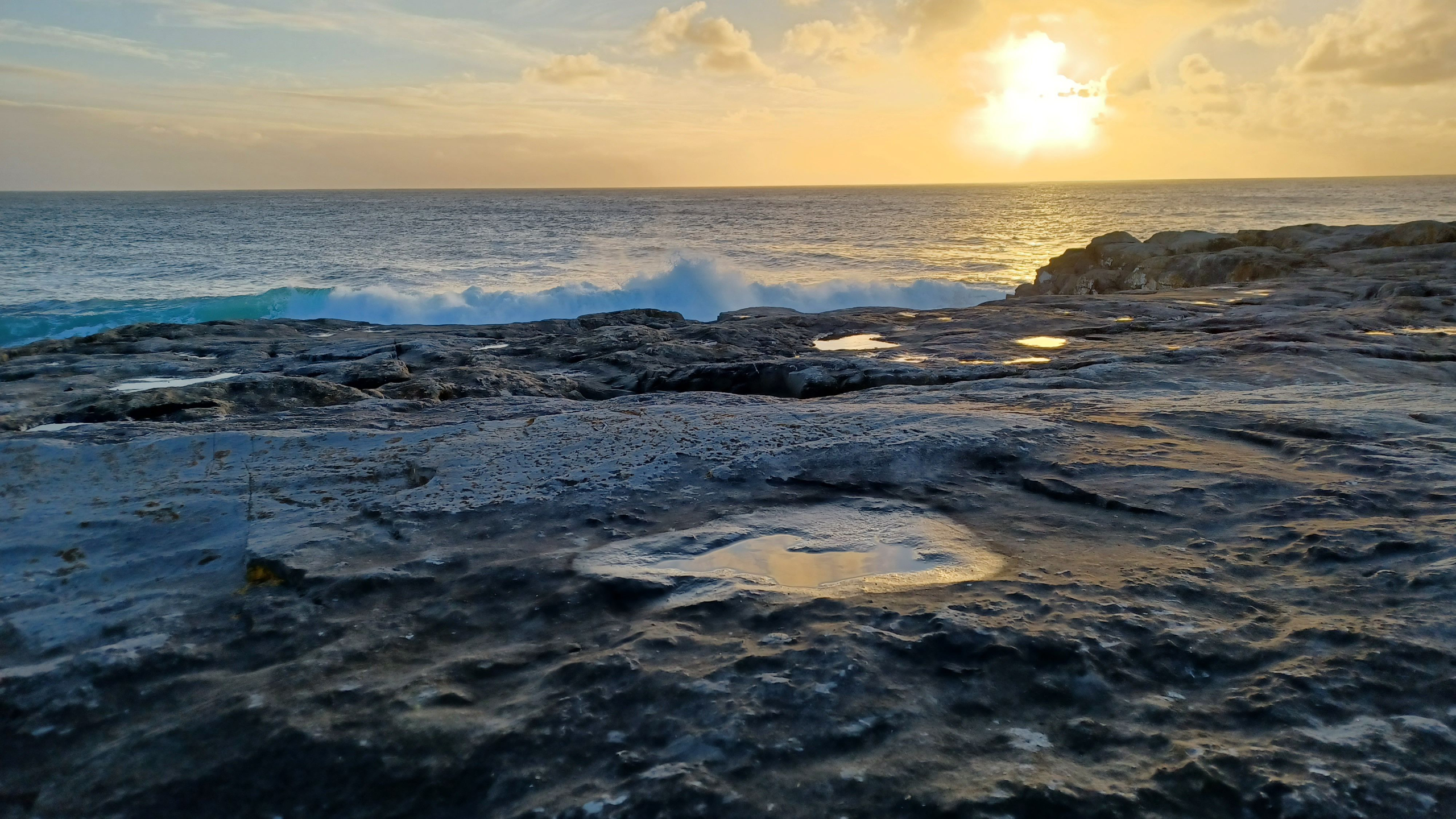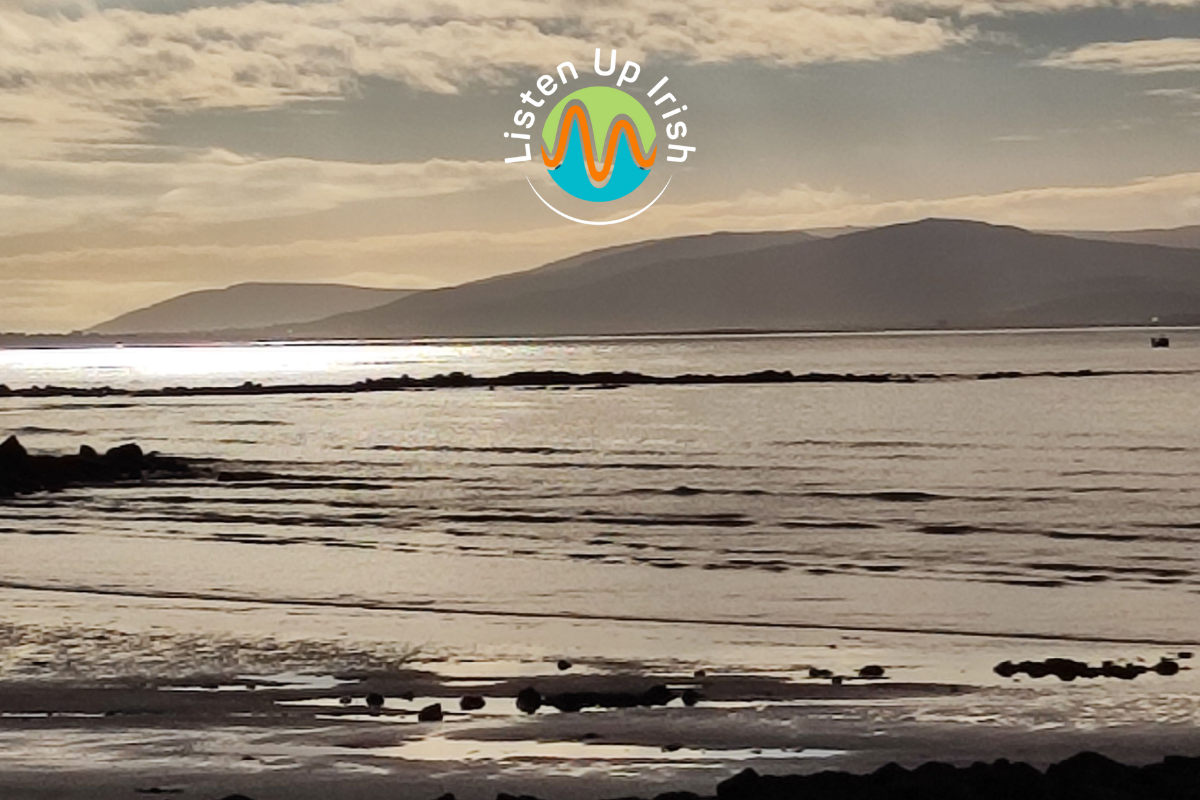Na gaotha / The winds
'Na gaotha' is a simple little poem in Irish, in which the character of each of the four winds is described. Click on the video above to listen to the poem while reading the text in English and in Irish.
Although this is a very simple little poem it contains quite a few easy lessons in Irish for anyone learning Irish:
1. An example of a feminine noun
2. The difference between 'tá' and 'bíonn'
3. How to describe coming from a particular direction
If you are totally new to learning Irish you might like to check out my Beginner Irish course; I also offer Irish language courses at beyond beginner and intermediate level. Read all about my Irish language courses here.
1. A Feminine Noun: An Ghaoth / The Wind
Nouns in Irish (as in many other languages) are classified into two groups - masculine and feminine. The word 'gaoth' (wind) is a feminine noun. When a feminine noun begins with a consonant, and the word 'an' (the) is placed before it a sound change happens. The letter 'h' is inserted into the second position of the word to mark this sound change. This process is called 'lenition', or 'séimhiú' in Irish.
Gaoth wind
but
An ghaoth the wind
An ghaoth aduaidh the wind from the north
Bíonn sí* crua She is hard
*Notice that 'sí' (she) is used when referring to the wind in Irish. In English we very rarely distinguish between masculine and feminine nouns, and would use 'it' rather than 'she' to refer to the wind.
You can read all about masculine nouns in Irish in my blog post: Learning Irish with Fr. Ted
2. The difference between 'tá' and 'bíonn' in Irish
An ghaoth aneas The wind from the south
Bíonn sí tais She is damp (Hiberno-Eng. she does be damp)
If you've just started learning Irish you probably already know that 'tá sí' means 'she is'.
And so you might wonder why the poem uses 'bíonn sí' instead of 'tá sí' in each verse.
What’s this ‘bíonn sí’ all about….
'Tá' is the Present Tense of the verb Bí.
Use ‘tá’ when something is happening in the present time, or is true right now
Tá sé tuirseach anois / He is tired now
'Bíonn' is the Habitual Present Tense of the verb Bí.
Use ‘bíonn’ when something happens regularly / repeatedly / always:
Bím san oifig ag a naoi a chlog gach maidin
I am in the office at nine o’clock every morning (Hiberno-Eng: I do be in the office...)
This is why 'bíonn' is used when describing each of the four winds: the wind from the north is always cold; the wind from the south is always damp etc.
‘Bí’ is the ONLY verb which has both a present tense and a habitual present tense.
Compare:
Ólaim gloine uisce anois I drink a glass of water now
Ólaim gloine uisce gach lá I drink a glass of water every day
But..
Tá Seán sa siopa anois Seán is in the shop now
Bíonn Seán sa siopa gach lá Seán is in the shop every day
Hiberno-English
In English, as spoken in the USA, England and elsewhere, there is no distinction between:
He is tired today
and
He is always tired
However, when the transition from speaking Irish to speaking English happened to the Irish people they would’ve been aware of the distinction between something happening right now, and something happening repeatedly, and wanted to be able to express this difference in English, as is possible in Irish. The way this is done in English spoken in Ireland (Hiberno-English) is to use the verb 'do' + be. This is why you will hear sentences such as ‘I do be tired a lot’ in Ireland, but not anywhere else in the English speaking world. It is a case of using English words but with an effort to imitate an Irish sentence structure. You would be more likely to hear this in the past than now, of course, and more likely with older people.
The following quotation from John Millington Synge’s play ‘Riders to the Sea’ is a good example of Hiberno-English, and shows quite clearly how the distinction between ‘tá’ and ‘bíonn’ is expressed in Hiberno-English:
‘A man who is not afraid of the sea will soon be drowned. For he will be going out on a day he shouldn’t. But we do be afraid of the sea, and we do only be drowned now and again.’
3. The words used to describe coming from a particular direction
The words used for describing direction can be a little difficult when learning Irish. This is because a different set of words is used to describe coming from a particular direction, and going towards a particular direction.
This poem is an easy way to learn the words used to describe coming from a particular direction:
Aduaidh / from the north
Aneas / from the south
Anoir / from the east
Aniar / from the west
That's a lot of easy Irish lessons from just one little poem!
If you are interested in learning Irish I offer online courses for learning Irish, with both live and self-study options. Sign up to my newsletter here to be kept in the loop about upcoming course dates.




